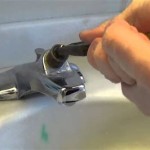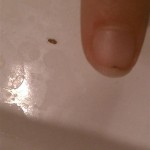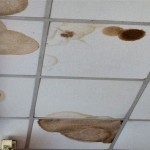Why Are There So Many Little Black Flies in My Bathroom?
Tiny black flies, often referred to as drain flies or moth flies, are a common nuisance in bathrooms. Their presence can be unsettling, especially when they swarm in large numbers. While they generally pose no direct health threat, their persistent presence can indicate underlying problems that need addressing. Understanding the reasons behind their infestation can help you take steps to effectively eliminate them and prevent future occurrences.
Moisture and Organic Matter
Drain flies thrive in damp, humid environments with access to organic matter. Bathrooms, with their constant exposure to water and potential for food scraps to accumulate, provide an ideal breeding ground. The flies are attracted to decaying organic matter, such as hair, skin cells, soap residue, and even the slime that can build up in drains. The moisture provides a suitable environment for their eggs to hatch and larvae to develop.
The most common breeding sites in bathrooms are drains, especially those that are rarely used or poorly maintained. Slow-draining sinks, showers, and floor drains can accumulate organic matter and stagnant water, creating perfect conditions for drain flies to flourish. Other potential breeding sites include wet towels, overflowing garbage bins, and even the damp areas around leaky pipes.
Life Cycle and Reproduction
Drain flies have a relatively short life cycle, typically lasting about a month from egg to adult. This rapid reproduction rate contributes to their rapid spread, with females laying numerous eggs in batches. The eggs hatch into larvae, which feed on decaying organic matter and grow rapidly. The larvae eventually pupate, forming a hard casing from which the adult flies emerge.
Adult drain flies are typically short-lived, surviving only a few days. However, their ability to reproduce quickly means that a small infestation can quickly escalate into a larger problem. Their flight is weak and erratic, making them appear "moth-like" as they flutter around the bathroom. The presence of adult flies indicates that there is a breeding ground nearby, and addressing the source of the infestation is crucial for effective control.
Preventing and Eliminating Drain Flies
Preventing drain fly infestations starts with maintaining a clean and dry bathroom environment. This includes:
- Regularly cleaning drains: Use a drain cleaner to remove accumulated organic matter and grease. Consider using a biological drain cleaner that contains bacteria to break down the organic matter.
- Ensuring proper drainage: Check for slow-draining sinks, tubs, and showers. Address any drainage issues promptly to prevent water from stagnating.
- Drying wet surfaces: After showering or bathing, wipe down wet surfaces, including the floor, walls, and mirrors. This prevents the growth of mold and mildew, which can attract drain flies.
- Keeping garbage bins clean: Dispose of garbage regularly and ensure that the bin is clean and dry. Line the bin with a plastic bag to prevent odors that can attract flies.
- Maintaining proper ventilation: Use a fan or open a window to provide adequate ventilation in the bathroom. This helps to reduce humidity and prevent the growth of mold and mildew.
If you already have a drain fly infestation, there are several methods you can use to eliminate them. These include:
- Using traps: Sticky fly traps or fly paper can be effective in catching adult flies. Place them near areas where flies are commonly seen.
- Applying insecticide sprays: Insecticide sprays designed for flying insects can be used to kill adult flies. However, it's important to note that these sprays can be harmful to humans and pets, so use them cautiously and follow the manufacturer's instructions.
- Using diatomaceous earth: Diatomaceous earth is a natural powder that is effective in killing insects by dehydrating them. Sprinkle it around areas where flies are present, such as near drains and under sinks.
- Pouring boiling water down drains: This method can be effective in killing drain fly larvae in the drain. However, it's important to do this cautiously as it can damage drain pipes.
It's important to remember that eliminating drain flies requires a multi-pronged approach. Addressing the underlying causes, such as moisture and organic matter, is crucial for preventing future infestations. By maintaining a clean and dry bathroom and promptly addressing any drainage issues, you can minimize the risk of encountering these pesky little flies.

5 Easy Ways To Get Rid Of Drain Flies Fast

Tiny Black Flies All Over House Help Mumsnet

Large Black Flies Suddenly Appearing In Bathroom Doityourself Com
How To Get Rid Of Gnats In My Bathroom Could They Have Laid Their Eggs Shower Curtain Quora
Fungus Gnats Sciarid Flies Rhs Gardening

Watch For Fungus Gnats In The House And Take Action If Found News

What Are These Tiny Brown Crawling Bugs In My Bathroom Apartment Lease Phoenix Area Arizona Az City Data Forum

3 Small Black Flying Bugs In The House Not Fruit Flies

How To Get Rid Of Drain Flies

How To Get Rid Of Drain Flies Moth And Prevent An Infestation Pest Defence
Related Posts







